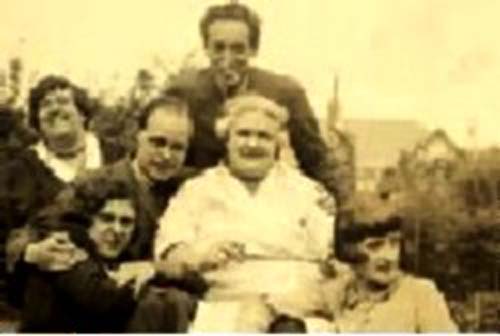Polly Burns: Pioneer Female Boxer -How Much is Fact and Fiction?
POLLY BURNS was the Women’s World Boxing Champion in 1900. A documentary was made about BURNS. The following article was written by Jim Doherty, named “A Woman Who Was More Than A Match For The Men.” RTE screened an amazing documentary in its ‘True Lives’ slot on Monday night. ‘My Grandmother Was A Boxer’ told the story of Polly Burns, who became the Women’s World Boxing Champion in 1900, through the eyes of her Dublin great -granddaughter, Catherine Morley. [1929 Article mentioning Polly Burns]
According to family legend Catherine’s great-grandmother was a professional boxer at the turn of the century and the documentary was based on Catherine’s personal search for the truth about this amazing woman. The program used a mix of interviews, archive footage, and dramatic reconstructions in its search for an elusive truth.
“Any life is complex, especially when it’s being pieced together from fragments of newspapers,” said Adrian Lynch of Graph Films, the production company that made the documentary. “There’s no doubt that, because Polly was a woman boxer, her life wasn’t written about, so in a sense we are bringing her back into history. There is that question of our father’s and grandfathers’ histories being known to us, but of women’s lives being invisible.”
To say that Polly Burns led an exceptional life is something of an understatement. She was born in 1881 to an old established Lancashire circus family. After the death of her mother in a trapeze accident her father remarried to a member of “the famous fighting Fairclough family”. Polly went into the circus life early and eventually became a ‘strongwoman’, famous as “the lady who held up donkeys with her teeth”.
Connected as she was to a famous family of pugilists it’s little wonder that Polly strapped on a pair of gloves and entered the boxing ring. She was 16 when she began her boxing career, fighting in booths at fairs, and mostly against men. “She was one of the few women at the time who fought men,” said Lynch “She made thousands out of it.”
The Dublin connection came about when Polly married Dubliner Tommy Lynch. They moved to Dublin, where Polly gave birth to two daughters, one of them Catherine Morley’s grandmother Agnes. The marriage didn’t last however, and Polly took to her old trade again.
“People think that women’s boxing is a new thing, but that’s not the case. The first recorded bout was between a fishmonger and an aristocrat in 1727. So there is a strange, other history that’s being going on all the time,” according to Lynch.
The pinnacle of Polly’s fighting career must have been when she became Women’s World Boxing Champion in 1900. She had gone to Paris to take on the US women’s champion, Texas Mamie Donovan. However, the American failed to show up, whether through fear or not we don’t know, and Polly was duly declared the world champion.
“A lot of the respected experts, especially the male ones, don’t believe Polly was a fighter. At the end of her life, living in poverty in Dublin, she sold her story to the British tabloids and a lot of the information about her comes from those tabloid stories; so the question is, did she make up material for them? We’ve found a lot of evidence that she didn’t,” said Lynch.
One of those who believes Polly’s story to be true is the president of the Women’s World Boxing Federation in Miami, and who as a former booth boxer herself had heard of Polly’s exploits in the ring.
We leave the last words on the subject to Adrian Lynch: “We like the idea that the story is potentially not true. With Polly, it’s very hard to separate the myth from reality, because her reality is in other people’s interpretation of her, which is interesting because this film and these newspaper reports continue that on again. So she keeps being reborn in the media. People will write about her and speak about her again, and the question still remains: is it true?” But like the journalist says to James Stewart at the end of ‘The Man Who Shot Liberty Valance’, “When the legend becomes fact, print the legend”.
My Grandmother Was A Boxer’ A review of the documentary – by an inside reporter -Sept 6, 1999
The Polly Burns documentary was a slight disappointment. It was mainly due to the fact that there was not a lot of hard evidence about Burn’s boxing career. There was reference to her in various newspaper articles, and interviews with people who had heard that she was once a fairground boxer, but not much in the form of pictures and records. It was hard to distinguish the fact from the fiction.
According to the documentary Polly Burns had an exhibition match with Jack Johnson (The then heavyweight champ of the world) in Dublin. Also, she was supposed to have fought men at the National Sporting Club in London, and one of her opponents there became her second husband.
Also on the plus side, there was some old footage from newsreels showing women boxing in France (Savate – French kickboxing) and in the US back in the 30’s. According to the clip from US, a girls school in Virginia had boxing lessons for the pupils, and apparently the boxing lesson was voted the most popular class among the girls. It was all very light hearted, and showed a lot of girls sparring on the campus, so apparently Doyle Weaver wasn’t the first to teach “The Noble Art” to girls.
